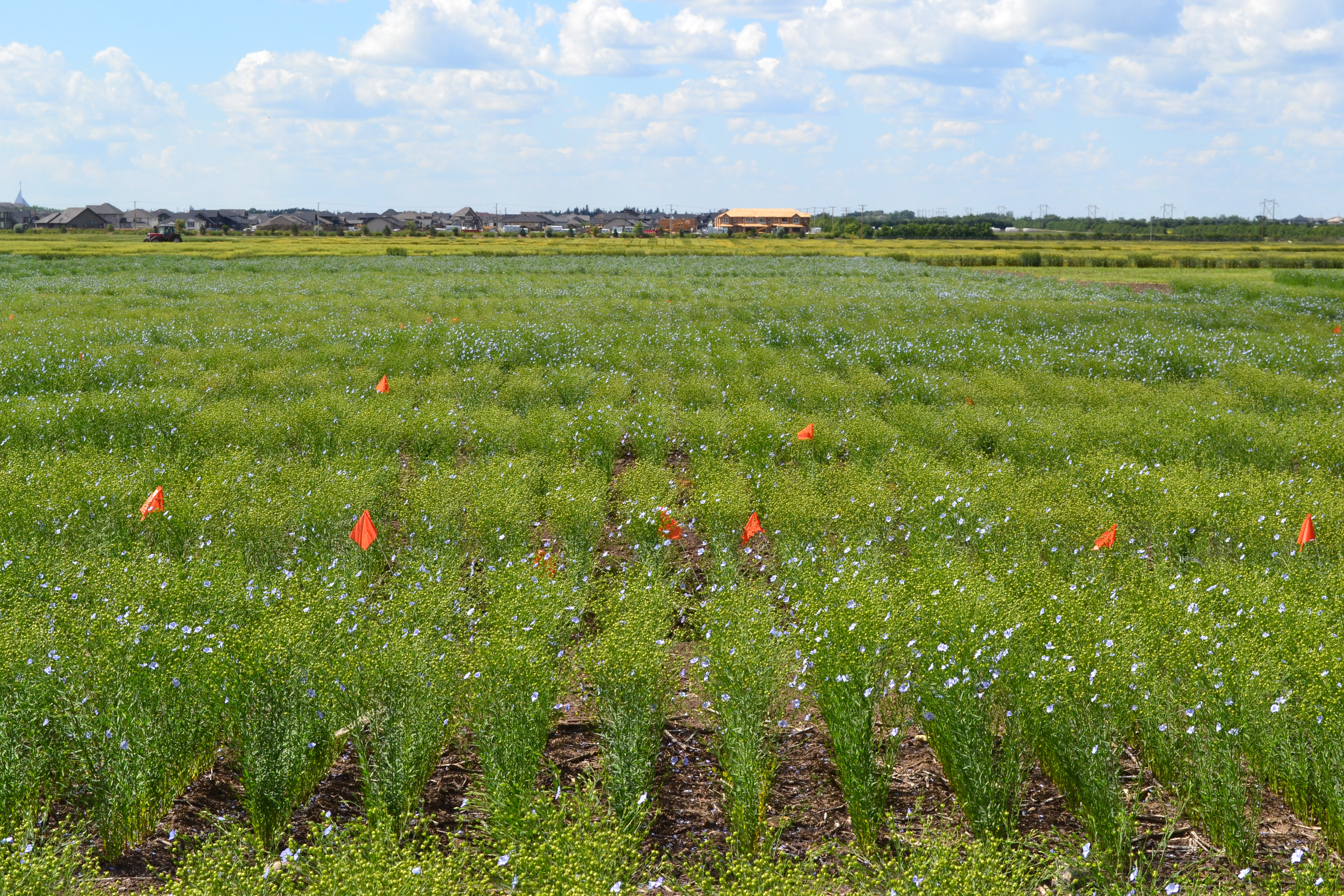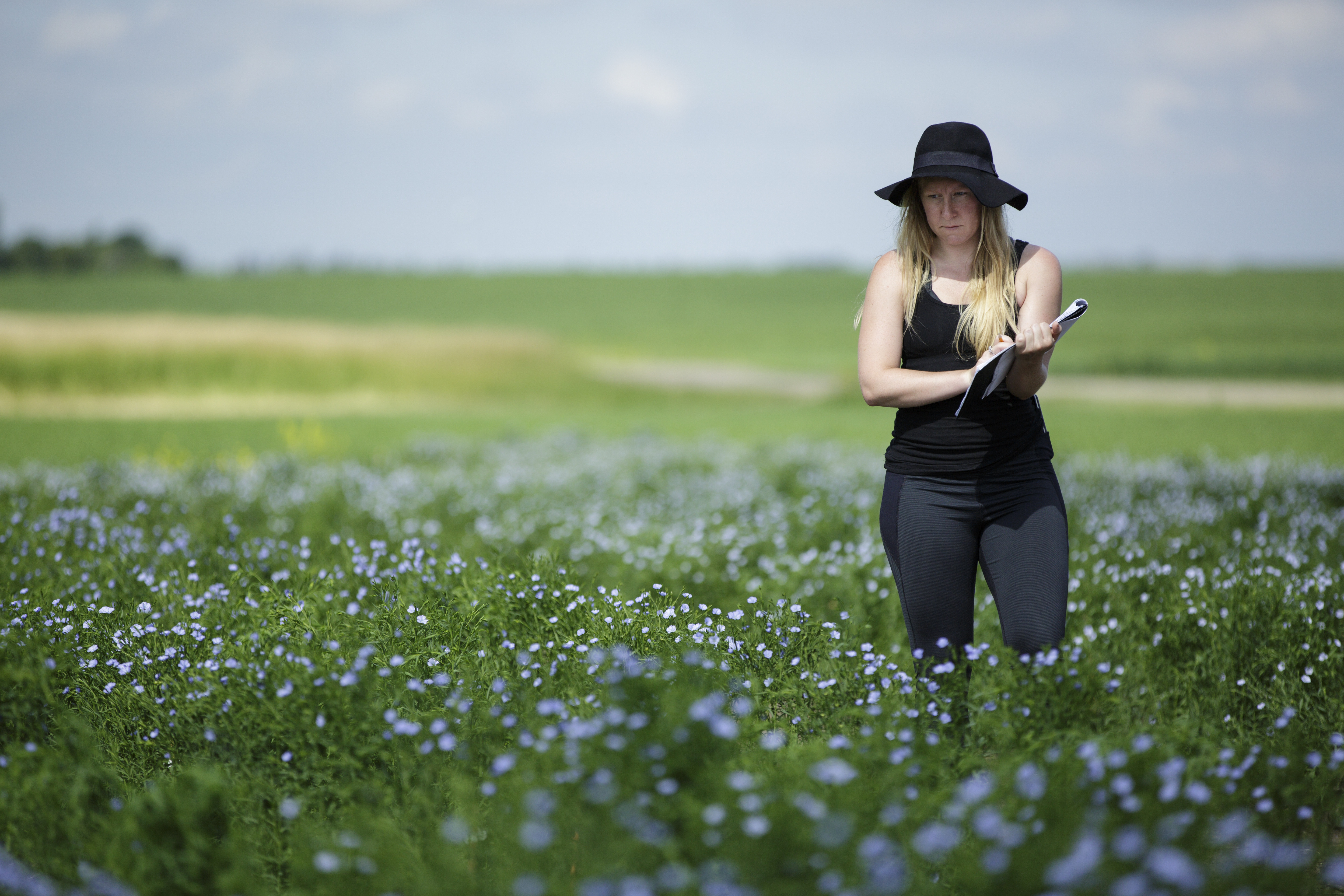Cultivar development
Initial Crosses
The first stage in the development of a new cultivar is to make a cross between two parents. Selection of the parents is based on their genetic traits. Traits of interest include:
- flowering time (including photoperiod and vernalization requirements)
- maturity date
- disease resistance (immunity to endemic races of rust, moderate resistance to fusarium wilt is required and moderate resistance to pasmo is desirable)
- other adaptations for the Canadian environment and production system
- yield potential (including plant height, seed weight, branchiness)
- seed quality characteristics (seed coat colour, oil, lignan or orbitide content)
- stress resistance (heat tolerance, drought tolerance)
- straw strength (fibre content) and lodging resistance
Crosses are performed in a growth chamber. The F1 plants (derived from the cross) are also grown in the growth chamber to produce F2 seed
Shannon Froese demonstrating how to cross flax
Selection nursery at Kernen Crops Research Farm

Small F2 plots are grown in the field and single plants selected from each different plot are then grown as progeny rows in the F3 to F5 generations. The best rows are selected in the field by the flax breeder and the field crew takes 3 plants from each row for advancement to the next year.

Using a hill seeder to plant an early flowering test on a windy day!

Dr. Megan House, scoring flowering of hillplots epimutant Recombinant Inbred Line (RIL) population grown at Kernen Crop Research Farm
Ken and Mackenzie use a small plot combine to harvest some of the nursery plots
Harvesting individual plots

